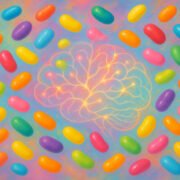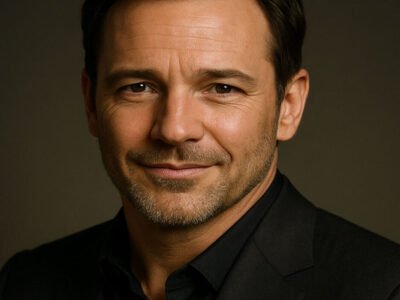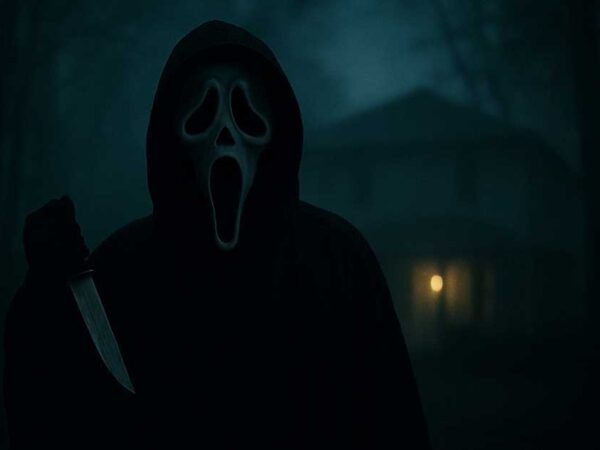Introduction – The Pioneer Who Changed Britain’s Bedroom Culture
Back in the early 1990s, Britain was still pretty buttoned-up about sex. Then along came Wendy-Ann Paige, an actress who would completely change how people talked about intimacy. She didn’t become famous through soap operas or Hollywood films – instead, she starred in what became the most talked-about sex education video of its time.
The Lovers’ Guide hit the shelves in September 1991 and turned Paige from a complete unknown into a household name practically overnight. This wasn’t your typical educational video either – it was real couples showing real intimacy, and it helped millions of people across Britain and beyond.
Paige was just 28 when she found herself at the center of what you could only call a sexual revolution. She wasn’t just acting – she was breaking down barriers that had kept people from talking openly about one of life’s most natural experiences.
Early Life and Background of the Future Star
Wendy Ann Croshaw was born in Coventry back in 1963. Her dad William was a local butcher, and her mum Daisy kept the family together until cancer took her when Wendy was only 19. Losing her mother so young hit hard, but it also made Wendy incredibly independent – something that would serve her well later on.
She was bright at school, earning three A-levels at Barr’s Hill Grammar before studying business at Coventry Technical College. Wendy had big dreams about working in marketing or advertising, but this was the 1980s, and opportunities for women weren’t exactly abundant.
Despite her qualifications, she kept hitting the same wall – employers only seemed interested in offering her secretarial work. Eventually, she took a job in the city council’s treasury department, but you could tell she was meant for something bigger.
The frustration of being undervalued would later fuel her determination to succeed on her own terms. Little did anyone know that this young woman from Coventry would soon become one of Britain’s most recognizable celebrities.
The Breakthrough: How an Actress Became a Household Name
Wendy’s path to fame started in the most ordinary way imaginable. In 1989, she was working as a marketing director selling Mediterranean timeshares in Watford when Tony Duffield walked into her office. He was there to see a mate who worked with her, but ended up fixing her broken filing cabinet instead.
Tony was quite a character – a sound engineer for the ska band Madness who’d been married twice and was into the swinging scene. There was instant chemistry between them, and when Tony spotted an ad in a swingers’ magazine looking for “real people” for a sex education video, he knew they’d found their chance.
The audition was unlike anything Wendy had ever done. Dr. Andrew Stanway, the medical adviser for the project, asked her to masturbate in front of him at his Surrey home to test her comfort level. “I wasn’t nervous, I was a natural,” she remembered years later. “I had a thoroughly good time and after I orgasmed, he said, ‘You’re hired!'”
That confidence became Wendy’s calling card. When filming started at a West London studio, she found herself performing in front of 35 male crew members with cameras everywhere. Most people would have been terrified, but Wendy thrived in the spotlight.
Celebrity Status and Cultural Impact
When The Lovers’ Guide was released in September 1991, nobody expected what happened next. This was before the internet changed everything – sex education was either clinical and boring or completely absent. The video offered something completely different: real couples showing genuine intimacy and connection.
The numbers were incredible. It sold 200,000 copies in just two weeks and eventually hit 1.3 million in the UK alone. It actually beat Disney’s “The Little Mermaid” and Bruce Willis’s “Die Hard” to become the number one home video. Think about that for a moment – a sex education video outselling major Hollywood blockbusters.
The controversy made it even bigger. Woolworths refused to stock it, but W.H. Smith and other retailers jumped on board. Getting an 18 certificate meant it could be sold on the high street instead of being hidden away in sex shops – that was revolutionary.
Wendy became the face of this sexual awakening almost immediately. People would stop her in Asda asking for relationship advice. “My wife won’t wear heels in bed, is she a prude?” they’d ask. As Wendy put it, “I’d want to say, ‘I don’t bloody know, I’m just here to buy dog food’.”
The timing was perfect. Britain was ready for change, with explicit Black Lace novels flying off the shelves and TV shows like “The Good Sex Guide” getting massive audiences. Wendy had become the poster girl for women’s sexual liberation.
Beyond Acting: Building a Media Empire
Success with The Lovers’ Guide opened doors Wendy never imagined. The entertainment industry quickly realized she was more than just a performer – she had genuine charisma and expertise that could be packaged and sold.
Max Clifford, the legendary publicist who made careers out of thin air, signed her up and helped transform her into a multimedia brand. This led to a five-book deal that established Wendy as a serious voice in sexual education.
Her 1994 book “Sextrology” became a bestseller by combining astrology with relationship advice. It proved that Wendy’s appeal went beyond just visual media – she could write with the same confidence she showed on screen.
Television came calling next. She appeared on “Richard and Judy,” where her frank discussions about sex helped normalize topics that had been taboo on daytime TV. Then came Desmond Morris’s BBC documentary “The Human Animal,” where she and Tony performed with tiny cameras attached to their bodies. The episode drew 11 million viewers – nearly double the usual audience.
Her empire kept growing: a profitable sex advice phone line, a regular column in The Sun, and a six-figure salary that reflected her unique position in British culture. She’d gone from selling timeshares to becoming the country’s most famous sex educator.
The Glamorous Years: Life as a Celebrity
At her peak, Wendy lived like a proper celebrity. She and Tony bought an 18-room mansion on the East Sussex coast, complete with new BMWs and a social calendar that read like a who’s who of entertainment.
Her celebrity connections were genuinely impressive. She partied with Slash from Guns N’ Roses, shared meals with Alice Cooper (who apparently could really put away the food), and played golf at 4 AM at the exclusive Sunset Marquis in West Hollywood. She met Michael Douglas and Leonardo DiCaprio, and became genuine friends with Led Zeppelin drummer Jason Bonham.
The pinnacle came in 1992 when she was in Las Vegas to play poker with Jack Nicholson. Tony surprised her by showing up in a stretch limo and whisking her away for an impromptu wedding. She was wearing a bikini with tassels and knee-high boots – perfectly capturing the unconventional spirit that made her famous. She never did get to play cards with Nicholson.
This wasn’t just about money and fame – it was validation that she’d transcended her working-class roots to become a genuine cultural figure. The girl from Coventry was now rubbing shoulders with Hollywood royalty.
Personal Struggles Behind the Fame
But success came with a price. The very intimacy that made Wendy famous started causing problems in her marriage. “Sex with Tony was like going on a busman’s holiday. I was bored,” she admitted later. When your private life becomes your public career, it’s hard to keep the spark alive.
Tony struggled with Wendy’s fame and couldn’t “keep up” with her success, according to Wendy. The dynamic that brought them together – their openness about sexuality – eventually drove them apart. Fame has a way of magnifying every crack in a relationship.
In 1999, hoping to save their marriage, they moved to Thailand and opened a restaurant and nightclub on Phuket. But a change of scenery couldn’t fix their fundamental problems, and they separated within a year.
That’s when things really started falling apart. Wendy began using cocaine, eventually spending £70,000 a year on her habit. She also battled PTSD and depression, made worse by the side effects of lithium medication.
By 2001, the woman who’d lived in an 18-room mansion was in a small Southend flat, engaged to an electrician named Dave Smart. The contrast was heartbreaking – from Hollywood parties to a quiet life far from the spotlight.
Final Years and Tragic End
Wendy’s last years were a far cry from her glamorous past. Living on benefits in a rundown Southend flat, she’d become a recluse, surviving on just £6 a day according to her partner Christian Bines.
A fall down cinema steps in October 2022 made everything worse. She suffered a slipped disc, broken collarbone, and permanently deformed arm that left her in constant pain. The chronic agony became another burden in a life already weighed down by depression and poverty.
Even so, glimpses of the old Wendy occasionally surfaced. Facebook photos from 2020 showed her in a white fur coat with full makeup, captioned “Love who you are” – a poignant reminder of the confident woman who’d once captivated Britain.
Christian described their final years as a daily struggle. “There was never any heating, it was becoming really difficult to pay off the bills,” he remembered. The woman who’d once earned six figures was going without basic necessities.
On December 13, 2024, Christian made the devastating discovery. “I just woke up and she was dead. She wouldn’t move and was already gone,” he said. The investigation suggested an accidental overdose of pain medication – a tragic end for someone who’d been battling chronic pain.
Wendy-Ann Paige died at 61, leaving behind a complex legacy that encompassed extraordinary highs and devastating lows.
Legacy of a Sexual Education Pioneer
Wendy-Ann Paige’s impact on British culture goes far beyond The Lovers’ Guide’s commercial success. She arrived at exactly the right moment – when Britain was ready for more open discussions about sexuality but lacked accessible, non-judgmental guidance.
What made her approach revolutionary wasn’t that it was explicit – it was that it was human. Unlike clinical textbooks or pornographic material, The Lovers’ Guide presented intimacy as something beautiful and natural. This helped countless couples improve their relationships and overcome inhibitions that had been passed down through generations.
The actress and celebrity also paved the way for today’s sex educators and influencers. Her willingness to be vulnerable and authentic created a template that’s still relevant in our digital age, where conversations about intimacy are more open than ever.
Most importantly, Wendy showed that women could control their own sexual narratives. At a time when female sexuality was usually portrayed through a male lens, she offered an alternative – a woman comfortable with her desires and unashamed of her expertise.
Her tragic end reminds us of the personal costs that can come with challenging social norms. But her contributions to sexual education and women’s liberation remain significant achievements that helped shape how we think about intimacy and relationships today.
Wendy-Ann Paige will be remembered not just as an actress or celebrity, but as a pioneer who helped Britain become more comfortable with one of humanity’s most fundamental experiences – the expression of love and desire between consenting adults.












